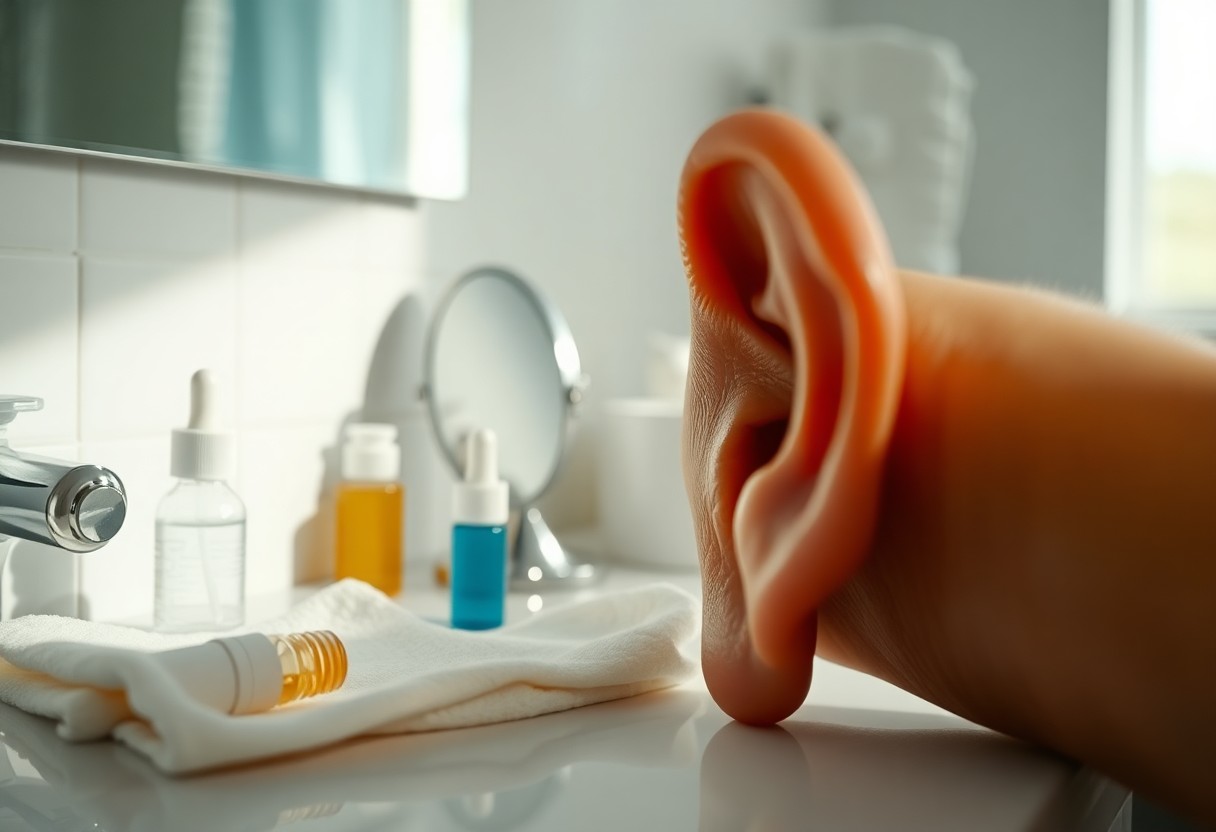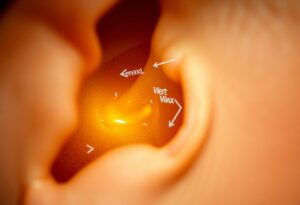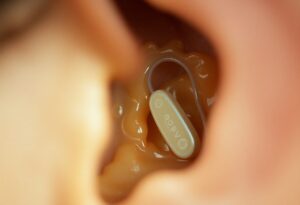Most people experience earwax production, but you may have noticed that some individuals seem to produce more than others. This variation can be attributed to factors such as genetics, environment, and personal hygiene habits. Understanding why this occurs can help you address any concerns and maintain optimal ear health. In this post, we will explore the reasons behind different earwax production levels and what they might mean for you.
Key Takeaways:
- Genetics play a significant role in determining earwax production, with variations impacting both quantity and type (wet or dry).
- Environmental factors, such as exposure to dust and debris, can increase earwax production as a protective mechanism.
- Age and changes in skin composition may influence earwax consistency and production over time.
The Biological Mechanisms Behind Earwax Production
The Role of Ceruminous Glands
Your earwax, or cerumen, is primarily produced by ceruminous glands located in the outer ear canal. These specialized glands secrete a combination of fatty substances, alcohols, and other organic compounds that contribute to earwax’s unique properties. This secretion serves various functions, including trapping dust and debris, providing a protective barrier against bacteria, and maintaining moisture in the ear canal.
Factors Influencing Gland Activity
Multiple factors can affect the activity of your ceruminous glands, leading to variations in earwax production. Genetic predispositions play a significant role, but environmental influences such as humidity, skin conditions, and even lifestyle choices can also contribute. For instance, people who frequently use cotton swabs may inadvertently stimulate the glands, causing an increase in secretion.
- Genetic makeup influences the type and quantity of earwax.
- Environmental conditions, such as humidity levels, affect gland activity.
- Skin health, including conditions like eczema, can alter earwax production.
- Your listening habits, including frequent earbud use, may lead to increased earwax accumulation.
- Thou should consider these factors when assessing your ear health.
Factors such as age can also impact how your ceruminous glands function. As you age, these glands may become less active, leading to drier earwax and potentially resulting in blockages. Hormonal changes, particularly fluctuations related to stress or diet, may impact gland secretion as well, altering earwax consistency and volume.
- The impact of age on ceruminous gland activity is significant.
- Hormonal imbalances can affect earwax production levels.
- Dietary choices, particularly fat intake, can influence your body’s secretion processes.
- Your personal hygiene practices play a role in ear health.
- Thou must monitor these aspects for optimal ear care.
Genetic Factors: Why Your DNA May Determine Your Wax Levels
- Your genetics significantly influence earwax production.
- Variations in specific genes dictate the type and amount of wax.
- Inherited earwax traits can provide insights into your family history.
- Some individuals may have a genetic predisposition to dry or wet earwax.
- Thou may notice patterns in earwax consistency among family members.
Inherited Traits and Wax Production
Your earwax type, whether wet or dry, is largely influenced by inherited traits from your parents. Genetic variations in the ABCC11 gene are primarily responsible for determining your wax consistency. If your family has a history of predominantly wet earwax, you may find yourself sharing that trait as well. This genetic connection establishes a clear link between family lineage and the characteristics of your earwax production.
The Impact of Ethnicity and Ancestry
The differences in earwax production based on ethnicity can be traced back to evolutionary adaptations. The predominance of wet earwax in many African and European populations likely provided a natural barrier against moisture and infection, while the dry type prevalent in East Asian populations may have been advantageous in drier climates. Understanding these genetic dynamics offers valuable insights into not just earwax but also broader aspects of human anatomy and environmental adaptation.
Environmental Influences on Earwax Accumulation
Climate and Humidity Concerns
Your environment, particularly the climate and humidity levels, can significantly impact earwax production. In hotter and more humid regions, sweat glands become more active, potentially leading to increased earwax. Conversely, arid climates may cause your skin to dry out, resulting in less earwax production as the body adapts to conserve moisture.
Exposure to Occupational Hazards
Lifestyle Choices That Affect Earwax Output
Dietary Influence on Ear Health
Your diet plays a role in maintaining ear health and can impact earwax production. Foods rich in omega-3 fatty acids, such as fish and nuts, help keep your skin hydrated, potentially balancing earwax output. Conversely, diets high in sugar and processed foods may contribute to an imbalance, leading to either excessive dry skin or overproduction of wax. Staying hydrated also supports overall ear function, so sufficient water intake is crucial for optimal earwax maintenance.
Hygiene Practices and Their Consequences
Your hygiene habits significantly influence earwax consistency and accumulation. Over-cleaning your ears by using cotton swabs can damage the ear canal and disrupt the natural wax production process. This may lead to increased buildup or even blockages, forcing you to rely on interventions for relief. Conversely, infrequent cleaning can result in excessive wax accumulation, which can cause discomfort, hearing loss, and infections.
A proper hygiene routine is vital. If you clean your ears too often, you risk irritating the ear canal’s sensitive skin, which can lead to inflammation and increased wax production. On the other hand, neglecting ear care can result in compacted wax that may obstruct your hearing. Using soft cloths to clean the outer ear and allowing natural mechanisms for wax expulsion ensures a balanced approach to ear hygiene. Additionally, some individuals might benefit from regular check-ups by healthcare professionals to monitor ear health and prevent issues arising from poor hygiene practices.
The Earwax Spectrum: Normal vs. Excessive Production
Identifying What is Considered ‘Normal’
Normal earwax production varies significantly among individuals, with factors like age, hygiene habits, and health status affecting levels. Typically, the body produces a small amount of earwax, enough to keep the ear canal lubricated and protected from dust and debris. You might notice a few flakes or a small, soft mass of wax, indicating that your body is functioning well in maintaining ear health.
Understanding Conditions Leading to Overproduction
Several conditions can trigger the body to produce excessive earwax, such as skin conditions like eczema, frequent use of earplugs or hearing aids, and even excessive cleaning habits that irritate the ear canal. In some instances, people with allergies or frequent colds might notice increased production due to inflammation or irritation in the ear area.
For example, eczema can result in flaky skin and dysfunction in the normal earwax production cycle, leading to an overactive response. Similarly, individuals who habitually clean their ears with cotton swabs might inadvertently cause irritation, prompting their ears to compensate by producing more wax. Factors such as age also play a role, as older adults often experience changes in skin texture, further influencing wax accumulation. By understanding these conditions, you can better manage your ear health and recognize when medical intervention might be necessary.
The Impact of Medications and Health Conditions
Drugs That Influence Gland Activity
Certain medications can alter the activity of your earwax glands, leading to either increased or decreased production. For instance, antihistamines, often used to treat allergies, can dry up secretions, which could reduce wax. Conversely, some topical antibiotics and anti-inflammatory medications may stimulate gland activity, resulting in a heightened wax output. Understanding your prescriptions may help you manage earwax levels more effectively.
Medical Conditions Correlated with Earwax Production
Various medical conditions can influence your earwax production, with differences in gland activity and consistency being a direct result. Conditions like eczema can cause overactive glands, while skin disorders impacting the ear canal might lead to blockage or changes in wax texture. Some autoimmune diseases also play a role, influencing the body’s natural secretions.
Individuals with seborrheic dermatitis, psoriasis, or eczema may find their earwax production significantly altered. These skin conditions often result in inflammation or irritation in the ear canal, prompting glands to produce more wax as a protective response. Additionally, diabetes and certain hormonal imbalances can affect how your body regulates earwax, exacerbating the condition. Staying informed about these correlations can aid in preventing discomfort and managing ear health more effectively.

Managing Earwax: Best Practices and Recommendations
Tips for Safe Ear Cleaning
Maintaining ear hygiene requires caution to avoid damaging the delicate structures within your ear. Use a soft washcloth to clean the outer ear and avoid inserting objects into the ear canal. You can also use ear drops formulated to soften wax. Consider these additional safety tips:
- Never use cotton swabs or similar objects inside your ear canal.
- Consult with your healthcare provider for recommendations on ear irrigation methods.
- Limit the use of ear candles, which may lead to burns or blockage.
- Perceiving changes in your hearing or discomfort may indicate the need for professional intervention.
When to Seek Medical Help
If experiencing symptoms such as pain, a sensation of fullness, itching, or noticeable hearing loss, consulting a healthcare professional is advisable. These signs may indicate excessive wax buildup or other underlying conditions that require attention. Regular evaluations of ear health can help prevent complications arising from improper earwax management. If you have a history of ear problems or frequent blockages, annual check-ups may help identify concerns before they escalate. Timely care will also ensure your ears remain healthy and function optimally.

The Cultural Perspective: Attitudes Toward Earwax in Different Societies
Norms and Practices Across Cultures
Your attitudes toward earwax often reflect cultural norms and practices. In some societies, earwax is viewed positively, symbolizing natural protection, while others see it as an unsightly byproduct of poor hygiene. For example, in Japan, regular ear cleaning is part of traditional health practices, with services dedicated to earwax removal, showcasing its cultural significance. In contrast, Western cultures may consider earwax a nuisance, leading to commercialization of various cleaning products.
The Psychosocial Implications of Wax Production
Wax production can affect your social interactions and self-perception. Elevated earwax levels may lead to embarrassment and social anxiety, especially in cultures that prioritize personal grooming. Conversely, in cultural contexts that embrace natural bodily functions, higher wax production may not carry the same stigma.
In cultures where personal hygiene is closely tied to social status, excessive earwax can lead to negative perceptions impacting self-esteem and confidence. For instance, individuals might go to great lengths in seeking out professional cleaning services to avoid embarrassment. This can create a cycle where those with naturally higher wax production feel pressured to conform to certain beauty standards, reflecting broader societal values on hygiene and appearance.
Final Words
With these considerations, you can better understand why some people produce more earwax than others. Genetic factors, environmental influences, and personal hygiene practices all contribute to the variability in earwax production. Your genetics may predispose you to either a dry or moist type of earwax, while your lifestyle and habits can also play significant roles. Being aware of these factors can help you manage your ear health more effectively, ensuring comfort and cleanliness in your daily routine.
FAQ
Q: Why do some people produce more earwax than others?
A: Earwax production varies due to genetics, with some individuals having inherited traits that lead to higher production levels.
Q: What factors contribute to increased earwax production?
A: Factors include age, skin type, and lifestyle choices, such as dietary habits and exposure to environmental contaminants.
Q: Is excessive earwax production harmful?
A: While earwax serves a protective function, excessive buildup can lead to discomfort, hearing loss, or infections if it blocks the ear canal.
Q: Can certain medical conditions affect earwax production?
A: Yes, conditions like eczema, psoriasis, and specific ear canal anatomies can increase earwax production or retention.
Q: How can individuals manage excessive earwax production?
A: Regular ear cleaning techniques, consultations with healthcare providers, and avoiding insertion of objects into the ear can help manage earwax levels.



